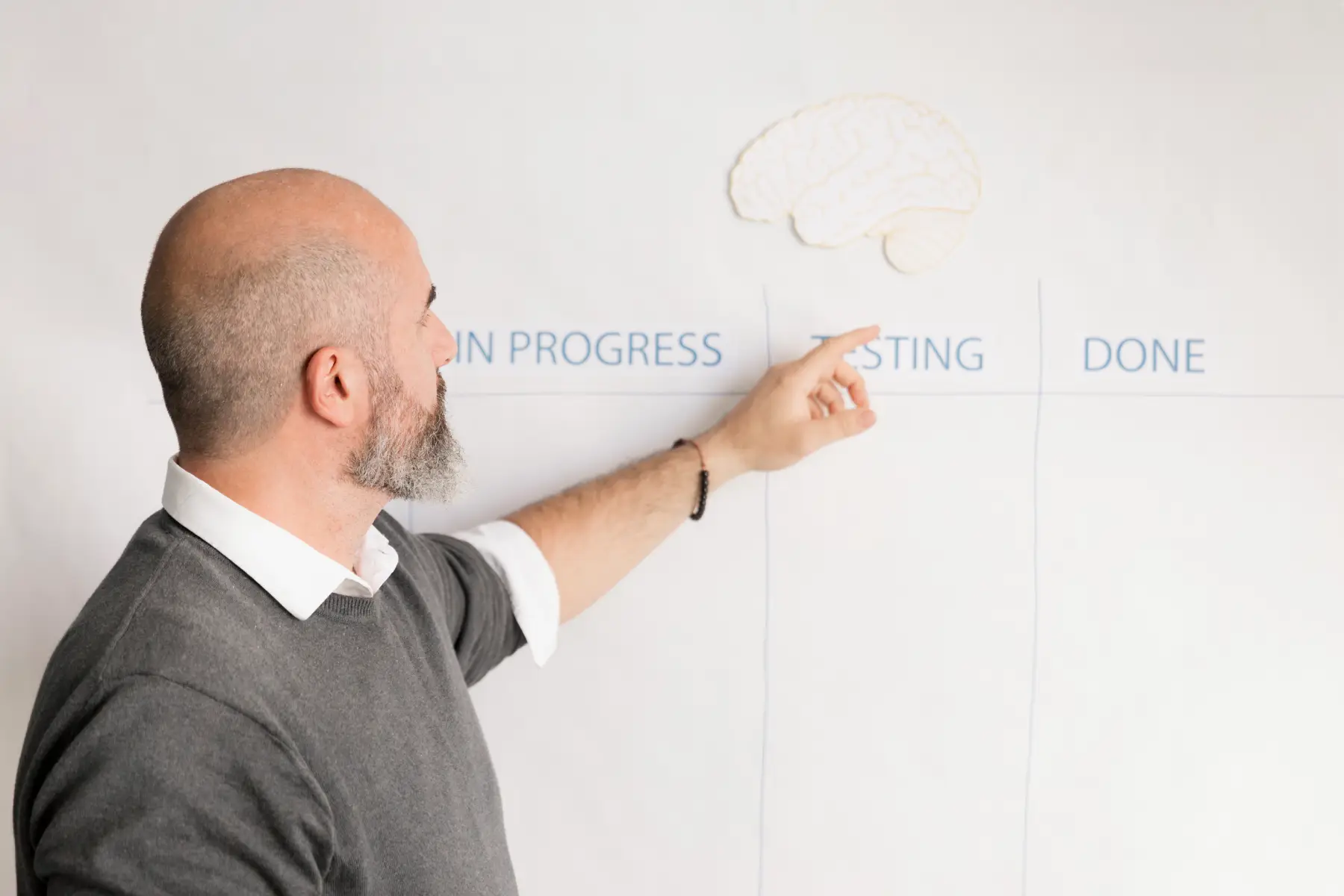Introduction: The Challenge of Emotional Unavailability
In any relationship, emotional connection serves as the foundation for intimacy, trust, and long-term compatibility. However, this emotional bond can be compromised when one or both partners appear emotionally unavailable. Emotional unavailability—whether intentional or unconscious—creates barriers to communication and vulnerability. Over time, emotional detachment leads to frustration, misunderstandings, and, ultimately, strained relationships or separation.
Most people associate emotional unavailability with a lack of care or effort in relationships, but the reality is far more complex. Emotional detachment often stems from past trauma, personal insecurities, or learned behaviours. This whitepaper explores the causes, signs, and impact of emotional unavailability, while providing effective strategies for fostering emotional intimacy and addressing detachment in relationships.
Whether you’re navigating an emotionally distant partner or self-identifying with emotional detachment, understanding the root causes of unavailability is the first step in addressing this issue and building healthier connections with others.
What Does It Mean to Be Emotionally Unavailable?
Emotional unavailability refers to an inability or unwillingness to open up emotionally in a relationship. People who are emotionally unavailable often struggle to express their feelings, develop trust, or engage in deeper, vulnerable conversations. While they may desire close relationships, their fear of intimacy or emotional pain serves as a significant barrier.
Common Characteristics of Emotional Unavailability:
- Avoidance of commitment or long-term relationships.
- Inability to express emotions or discuss personal feelings.
- Minimal effort in maintaining emotional intimacy.
- A tendency to shut down during moments of conflict or intimacy.
- Maintaining emotional “walls” to protect oneself from vulnerability.
While emotional unavailability can occur in any relationship—romantic, familial, or platonic—this whitepaper focuses on how it manifests in romantic relationships and its impact on partners.
Causes of Emotional Detachment
Emotional unavailability is rarely a conscious decision. Instead, it often stems from a variety of psychological, social, and personal influences. Below are some of the most common causes:
1. Past Trauma or Unresolved Pain
Many emotionally unavailable individuals have experienced adverse childhood experiences (ACEs) or past traumas. These could include:
- Neglect or abuse during childhood.
- Loss of a loved one.
- Betrayal or abandonment in a previous relationship.
To protect themselves from reliving these painful experiences, some people adopt emotional detachment as a defensive mechanism. Over time, this pattern becomes ingrained, affecting their ability to connect authentically with others.
2. Fear of Vulnerability
Vulnerability involves exposing oneself emotionally, leaving individuals open to potential rejection, pain, or humiliation. For those with emotional unavailability, this fear often stems from low self-esteem or past betrayals.
Rather than risking emotional discomfort, individuals might distance themselves emotionally, opting to keep conversations superficial or shifting focus to external distractions.
3. Attachment Style
Attachment theory provides insight into different approaches to emotional intimacy. Common attachment styles that may lead to emotional unavailability include:
- Avoidant Attachment: Individuals with avoidant attachment fear dependency or suffocation in relationships, leading them to push others away.
- Disorganised Attachment: This attachment style often results from traumatic experiences, resulting in both a yearning for closeness and a fear of it.
4. Societal and Cultural Pressures
Cultural norms around emotional expression can also promote emotional unavailability. For example:
- Men are often socialised to suppress emotions and avoid vulnerability, perpetuating emotional detachment in relationships.
- Some cultures discourage open expression of feelings, particularly sadness, anger, or embarrassment.
5. Fear of Commitment
Commitment phobia is another common component of emotional unavailability. This fear may stem from personal experiences or the belief that committing to someone limits independence or autonomy.
6. Burnout or Stress
Emotional detachment can sometimes arise from current life circumstances. For instance, someone dealing with chronic stress, financial pressures, or workplace burnout may lack the emotional energy to invest in a relationship.
Signs of Emotional Unavailability in Relationships
Identifying emotional unavailability can be challenging, especially in the early stages of a relationship. However, recognising these signs can help partners address the issue early on:
1. Avoidance of Emotional Discussions
Emotionally unavailable individuals often deflect or minimise conversations about feelings. They may change the subject, dismiss emotions as irrelevant, or respond with indifference.
2. Lack of Emotional Expressions
Emotionally distant partners may struggle to express affection, empathy, or joy, maintaining a neutral façade even during personal milestones, conflicts, or vulnerable moments.
3. Fear of Commitment
Regularly avoiding conversations about future plans, labels, or exclusivity may indicate emotional detachment. This resistance to long-term commitments reinforces emotional barriers.
4. Hot and Cold Behaviour
Emotionally unavailable partners may oscillate between intense affection and aloofness, leaving their counterparts feeling confused or uncertain about the relationship.
5. Overemphasis on Independence
Though independence is healthy, an overly independent partner may resist relying on, or being relied upon by, their partner. They may see emotional dependence as a sign of weakness.
6. Avoidance of Conflict
Rather than addressing conflicts within the relationship, emotionally unavailable individuals may resort to stonewalling, withdrawal, or avoidance, leaving issues unresolved.
Impact of Emotional Unavailability on Relationships
Emotional unavailability erodes connection within relationships and affects the well-being of both partners. Below are some of the most significant consequences:
1. Emotional Loneliness
Partners of emotionally unavailable individuals often feel lonely, unsupported, or disconnected, even within the relationship. This lack of emotional reciprocation can lead to frustration and resentment.
2. Communication Breakdowns
Healthy relationships rely on open, honest communication. Emotional detachment discourages meaningful conversations, leading to misunderstandings, unresolved conflicts, and emotional distance.
3. Cycles of Conflict
Without emotional intimacy, partners may argue about their differing needs or expectations. These conflicts often exacerbate feelings of detachment, perpetuating a cycle of frustration.
4. Low Relationship Satisfaction
Over time, emotionally unavailable relationships can feel unbalanced, with one partner providing significantly more emotional effort than the other. This creates dissatisfaction for both individuals.
5. Erosion of Trust
Vulnerability is integral to building mutual trust. A lack of emotional openness can cause the emotionally available partner to distrust the intentions or commitment of the emotionally unavailable one.
Strategies for Addressing Emotional Unavailability
While emotional unavailability can be challenging, it is not insurmountable. With self-awareness, communication, and professional support, relationships can rebuild emotional intimacy.
For the Emotionally Unavailable Partner
- Build Emotional Awareness: Reflect on personal triggers, past experiences, and fears that might be contributing to emotional detachment. Journaling, mindfulness, or therapy can help uncover these root causes.
- Practise Vulnerability: Share small emotions or experiences, starting with trusted individuals. Gradually expanding your ability to express emotions enhances emotional intimacy.
- Understand Attachment Styles: Learn about your attachment style and how it influences your behaviours in relationships. Over time, you can develop healthier relational habits.
- Seek Professional Support: Therapy can provide guidance in overcoming trauma, breaking unhelpful patterns, and developing healthier communication skills.
For the Emotionally Available Partner
- Emphasise Communication: Communicate your needs and feelings respectfully. Avoid blaming or criticising when discussing emotional barriers—focus instead on fostering an open dialogue.
- Set Healthy Boundaries: While patience is important, it’s essential to maintain your own emotional health. Set boundaries to ensure your partner’s emotional detachment doesn’t cause you undue stress or compromise your self-worth.
- Avoid Fixing Them: Remember, emotional availability is a personal responsibility. While you can provide support and encouragement, recognise that it’s up to your partner to address their detachment.
- Practise Self-Care: Nurture your own mental and emotional well-being to avoid burnout or resentment in the relationship.
For the Couple Together
- Attend Couples’ Therapy: Working with a couples’ therapist can help navigate emotional detachment in a safe, non-judgemental environment. Therapists provide tools for improving emotional intimacy.
- Strengthen Connection Through Activities: Shared hobbies, quality time, and acts that build trust—like consistent communication—help create a safe space for emotional expression.
- Celebrate Small Wins: Acknowledge progress, however small. For example, celebrating when the emotionally unavailable partner opens up more often can reinforce positive change.
Conclusion: Overcoming Emotional Detachment
Emotional unavailability is a challenge that can significantly impact the health of romantic relationships, but it is not insurmountable. By addressing underlying causes, opening lines of communication, and fostering vulnerability, both emotionally unavailable individuals and their partners can work towards greater connection and trust.
Whether you are the emotionally unavailable partner or in a relationship with one, understanding the roots of emotional detachment is the first step towards healing. Emotional intimacy takes time, mutual effort, and self-reflection but remains foundational to building meaningful, fulfilling relationships.
Call to Action
If emotional unavailability is affecting your relationships, consider exploring therapy or coaching. Guidance from trained professionals can help overcome barriers, deepen emotional capacity, and strengthen your connection with others.








